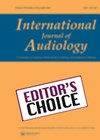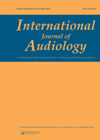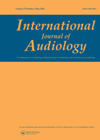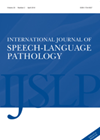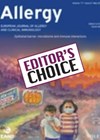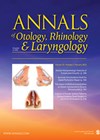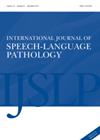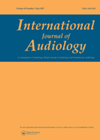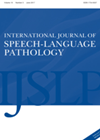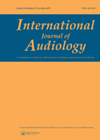
Journal Reviews
Hearing difficulties and memory problems
Since the Lancet Commission report in 2020, we have all been aware that untreated hearing loss is potentially one of the biggest modifiable risk factors for dementia in midlife. Hearing loss is also associated with other risk factors for dementia,...
Ethnic inequalities in hearing aid use
Recent events, including the COVID-19 pandemic, have once again highlighted health inequalities experienced by people from ethnic minority backgrounds. Our Editors’ Choice paper shows that there are inequalities in hearing aid use and includes the stark finding that ethnicity is...
Video otoscopy
The COVID-19 pandemic and challenges in offering health services at the time showed how useful telehealth services can be. One of the undoubted benefits of video otoscopy is that both images and recordings can be sent to specialists for assessments....
Assessment of audiological needs
A thorough assessment of audiological needs is crucial for a successful audiological rehabilitation. This study concentrated on creating the Québec Audiological Assessment Protocol for Younger and Older Adults (QAAP-YOA) that could be easily adopted in audiological clinics. The authors used...
Nothing about us without us: a how-to guide
Participatory design is an approach that is built around collaboration with users through a process of coproduction, design and creation. Most interventions are designed with the expert clinician researcher as the starting point, who looks at theory, evidence and their...
Climate change and global health
As we put together the Editors’ Choice for Jul/Aug 2022 Journal Reviews, news from a meeting of the G7 energy and environment ministers has been shared that the G7 countries are to stop public funding of any overseas fossil fuel...
Are quinsies worth draining?
Recent data is providing accumulating evidence that treatment failure in the management of peritonsillar abscesses (PTAs, aka ‘quinsies’) is similar when these are managed with medical treatment (MT) alone versus MT plus surgical drainage (M+ST). However, in the absence of...
Better or barrier: what do healthcare professionals think about teletherapy?
Most healthcare professionals will have had to dabble in using some kind of telehealth platform over the last 18 months or so. And most of us will have had some reservations, or have colleagues who just weren’t sure about Zoom,...
Information to support decision-making: does it make sense online?
The internet has become a major source for health information, with many people preferring to use the internet to search for advice than speaking to health professionals. Yet much of the information available is very difficult to read for the...
Which self-reported tinnitus and hyperacusis questionnaires are useful?
Tinnitus and hyperacusis may have very negative psychological side-effects. Due to their subjective nature it is important to have appropriate tools to assess them. In addition to the routine questionnaires such as THI, HQ, ISI, HADS or VAS, the authors...
Live versus e-learning – which is the most effective communication training approach for health care staff?
If staff are unable to communicate with their patients this can impact negatively on the patient’s healthcare. They may be excluded from decisions about their own care and their rights to informed consent may be violated. Conversation partner training has...
Tinnitus and leisure noise
Tinnitus attracts large interest among researchers all over the world due to its negative psychological side-effects. Researchers from the National Acoustic Laboratory (NAL) tested life-time noise exposure and its influence on the tinnitus experience in 1435 young Australians from various...

